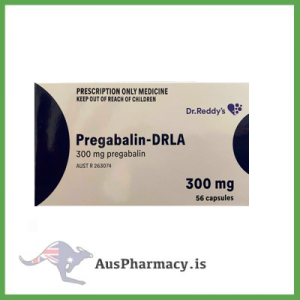Introduction
Lyrica (Pregabalin) stands as one of the most extensively studied compounds in neuropharmacology education. As a gamma-aminobutyric acid (GABA) analog, Pregabalin offers a foundation for understanding how drugs influence neuronal activity, neurotransmitter modulation, and pain signaling mechanisms in the central nervous system (CNS).
Educationally, it serves as a model compound in medical, pharmacological, and neuroscience courses for explaining how synthetic molecules can manage neurological dysfunction through biochemical interaction.
1. Educational Importance
In academia, Lyrica (Pregabalin) is valued as an example of:
-
Neurotransmitter-related pharmacology
-
Drug–ion channel interaction mechanisms
-
Synaptic transmission regulation
-
The role of calcium channels in pain modulation
It’s studied not for prescription details but as a didactic model that demonstrates the relationship between molecular design and clinical function.
2. Pharmaceutical Profile
| Parameter | Details |
|---|---|
| Generic Name | Pregabalin |
| Pharmacological Class | Anticonvulsant / Neuropathic Modulator |
| Molecular Formula | C₈H₁₇NO₂ |
| Mechanism Target | Voltage-gated calcium channels (α₂δ subunit) |
| Educational Relevance | CNS pharmacology, neurotransmission, neurochemistry |
Pregabalin’s molecular structure, derived from GABA analog chemistry, helps students study structure–activity relationships (SAR) in drug design.
3. Mechanism of Action (Educational Perspective)
While structurally similar to GABA, Pregabalin does not bind directly to GABA receptors. Instead, it modulates calcium channel activity by binding to the α₂δ subunit on presynaptic neurons.
This interaction reduces calcium influx into nerve terminals, leading to decreased release of excitatory neurotransmitters such as:
-
Glutamate
-
Norepinephrine
-
Substance P
This makes Lyrica an ideal model to explain neurotransmitter modulation and neuronal excitability in an educational setting.
4. Pharmacodynamics
In pharmacological education, Lyrica demonstrates how altering ion channel dynamics can affect CNS communication.
Key pharmacodynamic properties include:
-
Reduction of abnormal neuronal firing
-
Stabilization of electrical activity in nerve cells
-
Modulation of neurotransmitter release
These effects help explain how neurochemical imbalances lead to neurological conditions, offering a direct teaching tool in medical science.
5. Pharmacokinetics (ADME Learning Framework)
| Process | Educational Focus |
|---|---|
| Absorption | Rapid absorption; peak plasma concentration within 1 hour |
| Distribution | Not protein-bound — demonstrates diffusion principles |
| Metabolism | Minimal hepatic metabolism |
| Excretion | Excreted unchanged in urine |
| Half-life | Approximately 6 hours |
Its simple pharmacokinetic pattern makes Pregabalin ideal for teaching drug absorption and elimination mechanisms without complex metabolism variables.
6. Biochemical Mechanism
At the biochemical level, Pregabalin provides an academic lens for understanding neuronal calcium control and synaptic activity.
Educationally, it’s used to demonstrate:
-
The role of calcium ions (Ca²⁺) in neurotransmitter release.
-
How blocking calcium channels can reduce neural excitability.
-
How synthetic molecules can target neural signaling sites to alter physiological response.
7. Neurological and Educational Relevance
Pregabalin’s function extends beyond its therapeutic value — it’s an excellent subject for exploring neural communication, neurochemistry, and pain pathway regulation.
Students studying neuroscience can use it to understand:
-
Pathophysiology of nerve signaling
-
Mechanisms of neuropathic disorders
-
Molecular pharmacology of CNS-acting drugs
By integrating molecular theory with applied neuroscience, it bridges the gap between cellular biology and pharmacological action.
8. Role in Academic Research
Pregabalin is also frequently used in:
-
Neurophysiology laboratories for calcium signaling studies
-
Pharmacodynamics modeling to simulate CNS drug interactions
-
Educational software simulations teaching neurotransmitter control
It provides real-world context for understanding how neural regulation and molecular design intersect.
9. Structure–Activity Relationship (SAR)
From a medicinal chemistry standpoint, Pregabalin is used to explain:
-
How structural analogs of natural neurotransmitters are created synthetically.
-
The importance of stereochemistry in drug-receptor binding.
-
How hydrophilic and lipophilic balance determines CNS penetration.
SAR studies of Lyrica guide students in drug discovery and molecular modeling education.
10. Neuropharmacological Education
Lyrica is included in neuropharmacology courses to illustrate:
-
Modulation of synaptic transmission
-
Voltage-gated channel pharmacology
-
Signal propagation in neurons
-
Inhibition of excitatory neurotransmission
This enables learners to visualize how drugs impact communication within the CNS.
11. Safety and Educational Considerations
When used in classroom discussion, educators emphasize pharmacovigilance concepts, such as:
-
Dose–response relationships
-
Side effect pathways (e.g., dizziness, sedation mechanisms)
-
Neurological tolerance development
This reinforces the principle of rational drug use and risk-benefit evaluation in pharmaceutical training.
12. Laboratory Simulation Use
Pregabalin is frequently modeled in:
-
Receptor binding simulations
-
Ion-channel modulation experiments
-
Computational pharmacology modules
These lab exercises teach students about receptor affinity, binding kinetics, and drug modeling.
13. Educational Discussions on CNS Pharmacology
Pregabalin offers teaching opportunities in understanding:
-
Central sensitization
-
Peripheral nerve hyperexcitability
-
Synaptic plasticity
-
Chemical control of pain signaling pathways
It helps frame discussions on how neurochemistry translates into functional neurology.
14. Historical Development
Pregabalin was developed in the 1990s as a next-generation analog of gabapentin, providing enhanced bioavailability and CNS penetration.
This timeline makes it an educational case study for pharmaceutical innovation and molecular refinement.
15. Academic Summary and Conclusion
Lyrica (Pregabalin) remains one of the most essential compounds for studying neurotransmitter modulation, calcium channel regulation, and CNS pharmacology.
Its educational importance extends from molecular theory to applied neurobiology — making it a cornerstone in both pharmacological and biochemical curricula.





